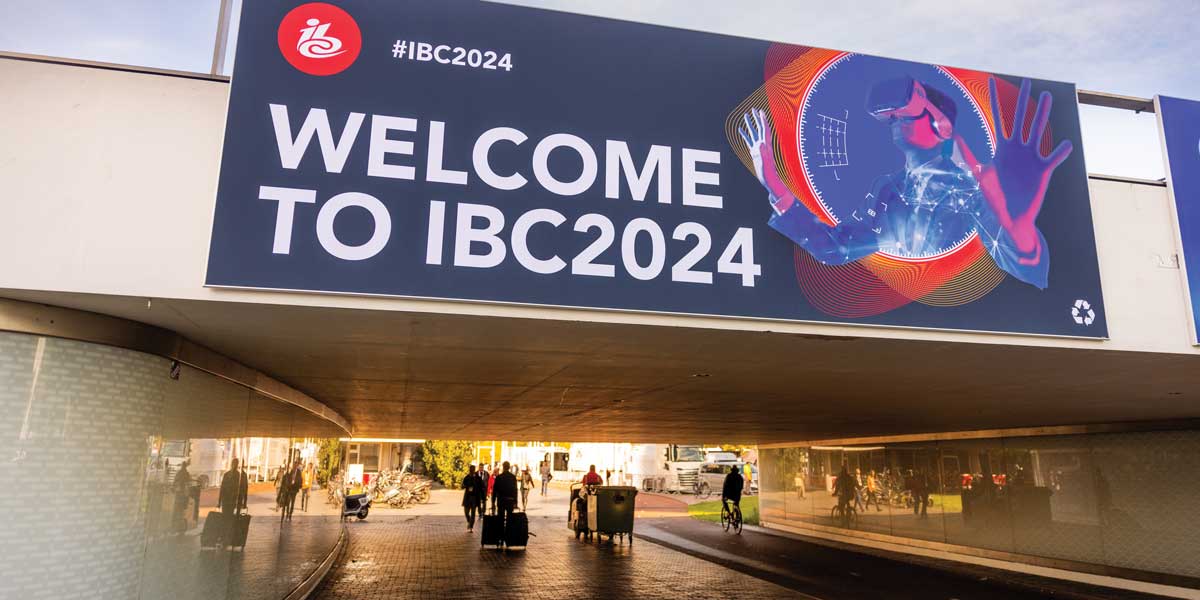
IBC 2024 Review
Posted on Oct 30, 2024 by Samara Husbands
Definition visited IBC 2024 for a first look at the novel video production technologies on offer from big names in the business and newcomers alike
Words Nicola Foley
IBC 2024 has officially wrapped, with Amsterdam’s RAI once again hosting an inspiring, insightful and – let’s be honest – exhausting few days of tech, talks and trends that left us buzzing with ideas. Despite feeling quieter at times, attendance actually surpassed that of 2023, with over 45,000 visitors from 170 countries (2000 more than last year).
Spread across 46,000 sq m, the event showcased over 1350 exhibitors – including additions like the AI Tech Zone and the IBC Talent Programme – which had us racking up huge daily step counts!
“IBC continued on an upward trajectory in 2024, with a tremendous turnout across the entire IBC community as people gathered in Amsterdam to explore the technological advances and market dynamics redefining our industry,” comments Michael Crimp, IBC’s chief executive officer.
“In a year marked by major events such as the Olympics and national elections, there was an extremely positive buzz at IBC 2024. This year’s show addressed soaring interest in trends such as AI’s leap from theory to real-world applications, how the industry is fighting disinformation in news and the need to foster talent and diversity across media, entertainment and technology.”
Other hot topics that took centre stage included sustainability, 5G, cloud innovation, esports, immersive media, OTT and streaming services, ad tech, the metaverse, edge computing and connected technologies. But for us, it was all about the cutting-edge developments in the cine sector. So, without further ado, here’s our round-up of the most exciting innovations we uncovered at IBC 2024!
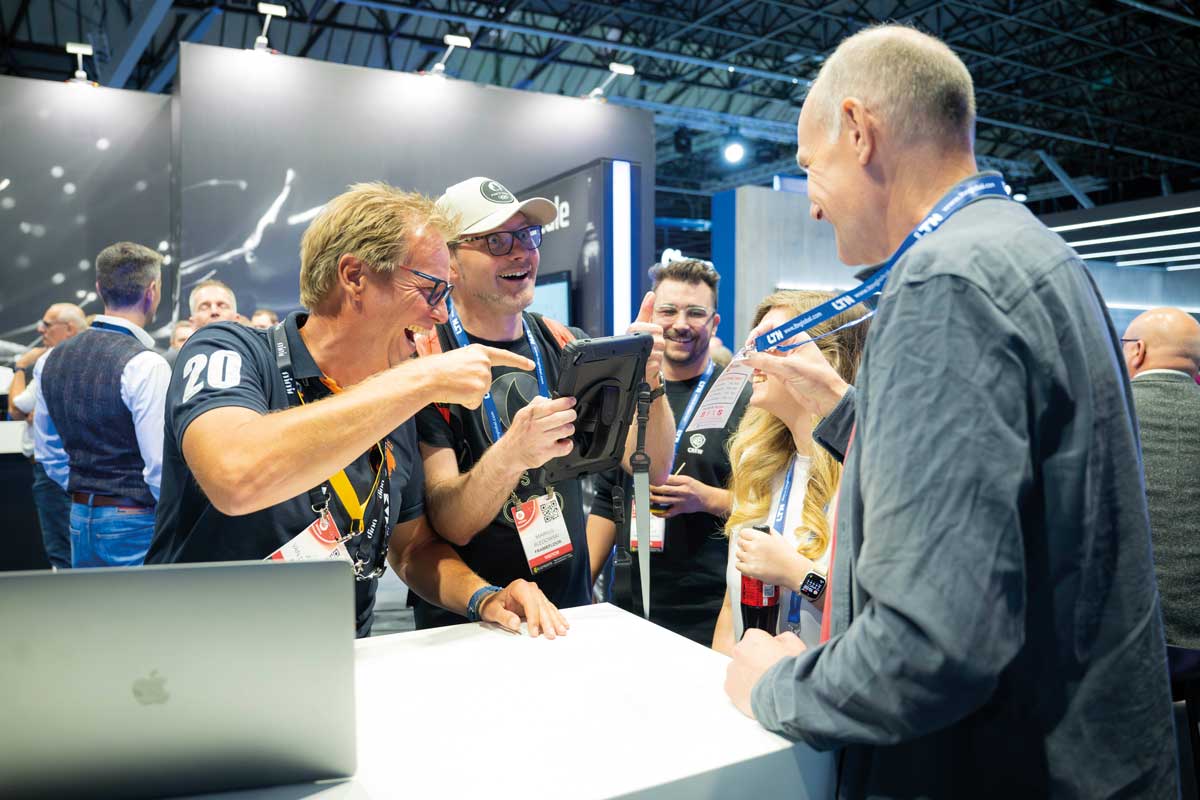
Blazar glory
A new discovery for us on the show floor was Blazar, which specialises in budget-friendly anamorphic lenses. The amenable pricing doesn’t mean a compromise on quality, as we discovered at IBC when the super-friendly team talked us through both the existing range and what’s on the horizon. There’s a lot coming from this brand, so it’s one to get on your radar.
The latest addition is CATO, a lens family offering a consistent 2x anamorphic squeeze ratio that covers large formats. The set includes 40mm T2, 55mm T2, 85mm T2.8 and 125mm T4 models – and these optics are the lightest of their kind on the market, so offer amazing portability. Image-wise, expect a classic anamorphic look, balancing retro characteristics with modern technology.
Stay tuned for more from Blazar in Definition magazine!
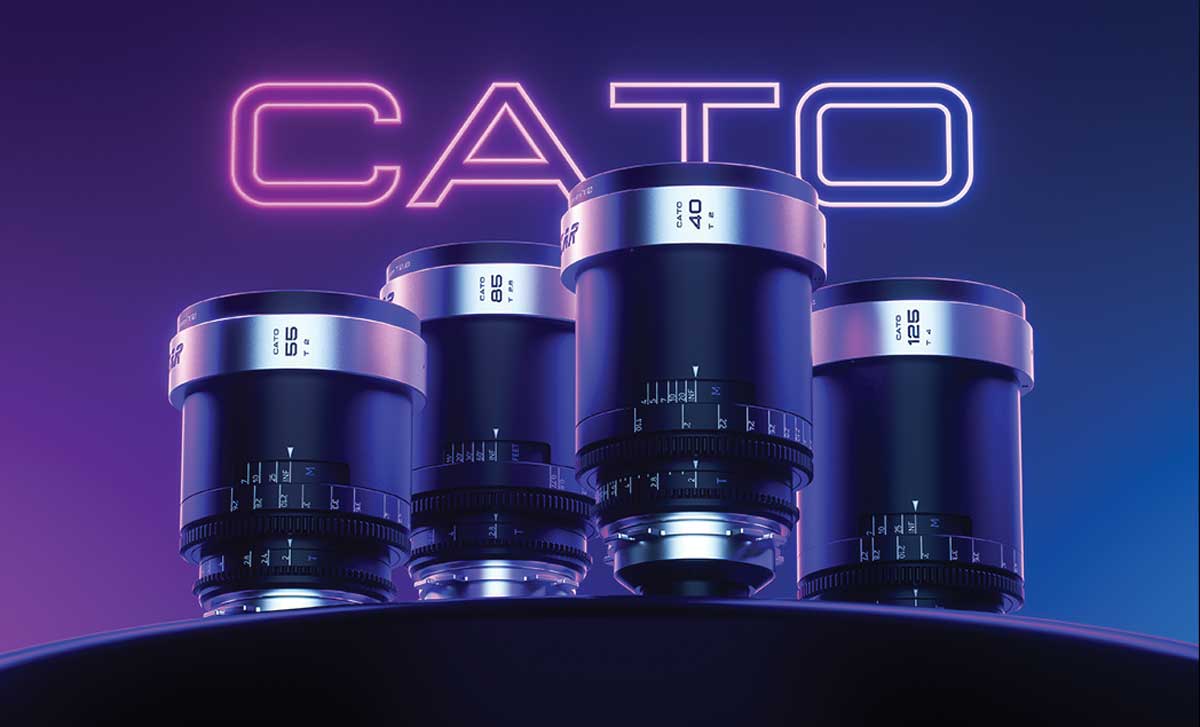
Top show floor finds
As always, the show was rife with new launches. Over in Hall 12, we discovered Achtel – an Australian company run by Pawel Achtel, ACS – showing off a very impressive new 9×7 digital cinema camera. Offering groundbreaking capabilities for video professionals, particularly in high-end VFX, IMAX and VR productions, the 9×7 is capable of shooting in 18.7K and can record uncompressed, 16-bit Raw footage at an astonishing 10GB/s, ensuring no loss of detail or colour gradation.
The camera’s 65-million-photosite sensor, boasting twice the photosites of 8K cameras, delivers ultra-high-resolution images with game-changing sharpness and detail, surpassing even 70mm IMAX film.
Also innovating on the camera front is Blackmagic Design, which was demoing the URSA Cine 12K it launched at NAB, as well as its new sister camera, the 17K. Building on the same platform and RGBW sensor tech as the 12K, the jump to 17K is notable for offering a resolution on par with 65mm film, making it an enticing option for high-end productions that demand detailed VFX or expansive visuals.
Lens coverage could be an issue, but judging by the number of manufacturers stopping by to have a nosey and enquire about testing their glass on this camera, that will soon be fixed. While there was a demo unit available at IBC, it’s still in engineering currently, so it’ll be a while until we see this camera hit the market.
Over at the Sony area, the BURANO 2 was on display – with talks of a release date in spring next year. Version 2.0 will offer a host of upgrades, many requested directly from the user base – including new recording formats, 1.8x de-squeeze and monitoring improvements.
On the lighting front, ARRI unveiled the next generation of its industry-leading soft light – the SkyPanel S60 Pro. One of its most exciting features is ARRI’s digital twin tech, which syncs real-world and virtual lighting set-ups, making it easier to coordinate across pre-production and on-set.
The S60 Pro is also future-ready with CloudIO, a remote diagnostics tool perfect for rental houses and large productions. Along with better pixel control and colour accuracy, the S60 Pro has built-in power and wireless control options, all in the same familiar form factor, making it an appealing upgrade for any lighting set-up.
Astera, meanwhile, was showcasing the versatility of its popular LunaBulb – which resembles a vintage tungsten bulb but with modern LED performance. The team was keen to show off a brand new accessory kit which brings a range of tools including snap-on blockers, diffusers, reflectors and lenses – all designed to modify the light’s direction, intensity and quality, and ultimately make the LunaBulb more adaptable for both indoor and outdoor shoots.
From Canon, a standout was the EOS C400, the company’s first high-end RF mount Cinema EOS camera, delivering the capabilities of larger production cameras without all the bulk. Canon was also showing off its Flex Zoom lenses – designed for 8K productions – including the new RF-S 3.9mm f/3.5 STM DUAL FISHEYE lens, which makes 3D VR shooting a breeze. The Lens Showcase Zone highlighted old faves and fresh releases like the CN7x17 KAS T Cine-Servo lens, reinforcing the brand’s commitment to providing versatile tools for filmmakers.
The BLAIR light project
A highlight of the show was the chance to get hands-on with Aputure’s groundbreaking STORM 1200x. At the heart of its impressive capabilities is the innovative BLAIR light engine, which produces stunning full-spectrum white light across an extensive CCT range from 2500 to 10,000K, alongside full +/- green control. This level of adjustability allows filmmakers to achieve unmatched precision in colour correction, seamlessly matching natural daylight and enhancing skin tones.
The STORM 1200x isn’t just powerful; it’s also incredibly versatile. Its ProLock Bowens mount allows effortless switching between modifiers, to create fresnel, soft light, or hard open-face par as needed. Plus, the IP65 weather rating means it’s built to handle the rigours of any environment, making it ideal for both studio and outdoor shoots.
Additional highlights include extreme colour-accurate dimming that maintains performance even at low brightness levels, ensuring consistent output across the product’s whole CCT range. Its varied connectivity options (CRMX, DMX and Bluetooth) also allow seamless integration into any set-up. Aputure is raising the bar for portable, high-output lighting with the STORM 1200x – it’s definitely worth a look for any lighting professional.

AI Looms Large
Unsurprisingly, the topic of AI dominated talks and discussions around the RAI. The new AI Tech Zone in Hall 14 led the way, hosting a line-up of speakers who delved into everything from issues of content tracing to unlocking new pathways to monetisation. Perhaps the most important of the lot was ‘Can AI be regulated?’, which brought together Renard Jenkins (SMPTE) and François Lavoir (EBU) to explore what should be policed and how – and whether it’s even possible to keep pace as technology races ahead of legal frameworks.
Lavoir outlined how the EU AI Act is tackling key issues like health impacts, product safety and transparency (eg disclosing when you’re interacting with AI). He compared this with California’s stricter stance, which could set the tone for global policy if adopted. The duo also touched on the delicate balance between innovation and protecting the public, especially when it comes to safeguarding content creators and addressing copyright in the AI era.
Immediately following this, a session on content provenance raised more questions than it had answers. Exploring the morass of overlapping regulation, holes in policy, technology gaps and communication problems in dealing with AI-generated content, the main takeaway was that there’s much work to be done – made exponentially harder by the fact that we’re dealing with a moving target.
Naomi Schoppa from Fraunhofer FOKUS shared some eye-opening statistics, like the fact that 80% of Germans can’t recognise deepfakes, highlighting that trust in content is waning. The consensus was clear: while the tech is there, the real challenge is how to put it into practice. Collaboration across the industry will be key to keeping AI-generated content transparent.
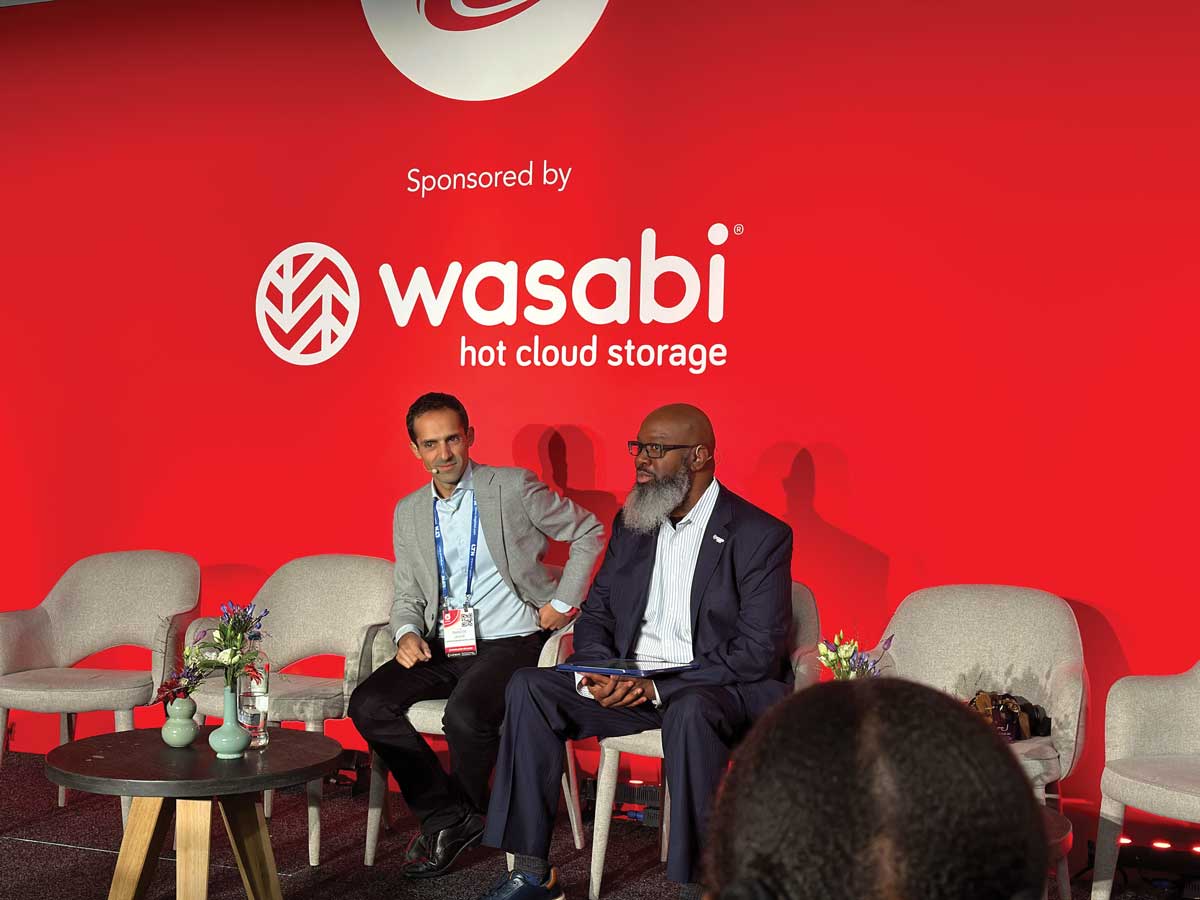
Matthew Blakemore, CEO at AI Caramba!, took a closer look at the rapid advancements in generative AI content creation tools over the last 12 months. He treated the audience to a (frankly terrible) AI-generated song and video, as well as a much more impressive voiceover in the style of David Attenborough narrating a nature video of paper birds swooping through the air. Scarily convincing, this clip brought urgent concerns around copyright to the fore.
Blakemore’s talk also touched on big challenges like the energy demands of creating so much AI content (which he argued will reduce as AI improves and needs fewer prompts). He also discussed legal grey areas around unlicensed data, and how companies need to find ways to innovate while rewarding creators fairly.
Away from talks of big ideas on the stages, it was good to actually see how AI is being used to help creators. The latest updates to Adobe Premiere Pro and After Effects introduce exciting new generative AI tools. In Premiere Pro, Text-Based Editing lets users quickly make edits based on transcripts, while Enhance Speech can clean up audio with a single click.
There are also third-party plug-ins like FireCut, which helps automate repetitive editing tasks like trimming multiple takes or creating short clips from longer content. Generative AI in After Effects enhances animation presets and 3D workflows, allowing easy generation of complex motion graphics and animations. These AI-driven features can make the whole creative process smoother and speedier for video professionals.
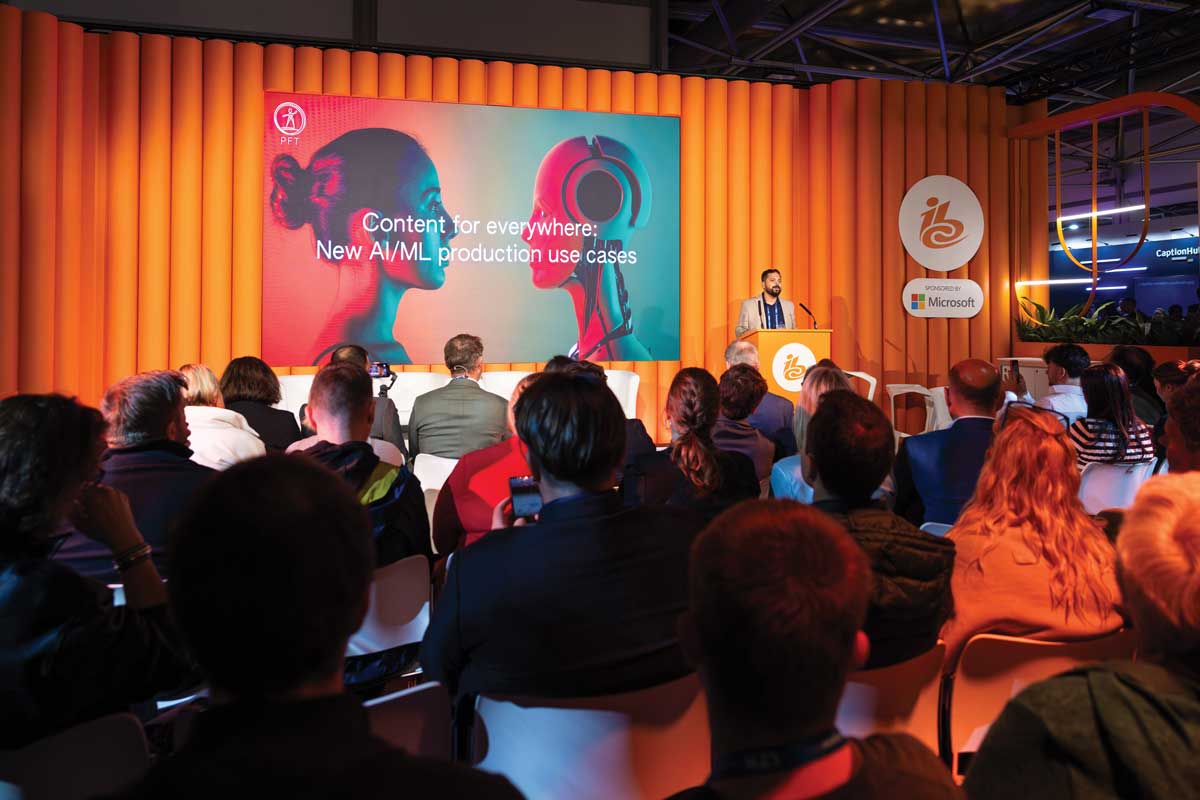
Definition gets on board The Flint Green Line!
We were chuffed to be invited to experience The Flint Green Line: a networking event aboard a Eurostar carriage taking IBC attendees from London St Pancras to Amsterdam, complete with live jazz, a pub quiz, talks, lunch and drinks. Organised by The Flint, a platform for sustainability news in the M&E sector, the event felt like a school trip – in the best way, and with beer! – maintaining an energetic buzz as we sped across Europe to our destination.
More than just a fun day out, The Green Line also directed focus onto the carbon footprint of major trade shows like IBC, which see tens of thousands of attendees flying in from across the globe.
Inspiration for the initiative traces back to Flint co-founder Neal Romanek’s time at BAFTA albert, where the environmental toll of large-scale events became a frequent topic of conversation. “We started thinking, is there a better way to do this? Private jets and excess are seen as glamorous, and when it comes to sustainability, that’s a real problem,” Neal explains.

The idea really took shape during discussions at last year’s IBC. “Everyone flies in for these short events, and we realised we can’t keep doing this,” Neal says. “But you can’t just tell people to stop flying – that’s like telling them not to eat cheeseburgers! We needed an alternative.”
As one of the most sustainable modes of international travel, the Eurostar, with a carbon footprint that’s 95% lower than flying, quickly became the obvious solution. “It turns out Eurostar already offers these types of events, but they don’t advertise them much,” Neal adds.
With 75 passengers, The Green Line’s maiden voyage was fully booked, and enjoyed an overwhelmingly positive response. “IBC has become one of our sponsors, and they were genuinely excited about promoting better travel options,” he shared. “We have a great mix of vendors, broadcasters and journalists attending, which is fantastic for networking.”
Looking ahead, Neal stresses the importance of innovative formats and ideas to engage people with sustainability. “We take very seriously the fact that there are big changes ahead, whether we like it or not – and a big part of the solution will be getting creative and trying new things,” he reflects. “We’ll be keeping our eyes out for new types of events, opportunities to encourage people to try new things and ways to create conversations and exchange ideas, because the changes that need to happen need to be rapid, especially in terms of decarbonising. That’s the priority, and that’s not going to happen without people coming together.”
This feature was first published in the November 2024 issue of Definition.








